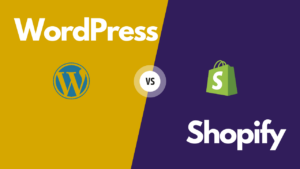I. Introduction
In today’s digital landscape, web security is of utmost importance as cyber threats continue to evolve. Protecting sensitive data, user information, and ensuring a safe online environment for users are paramount for website owners and developers. In this article, we will delve into essential security best practices for web development to safeguard websites against potential vulnerabilities and attacks.
II. Secure Coding and Development Environment (Security Best Practices)
Secure coding practices play a crucial role in building resilient and secure web applications. Developers should follow best practices such as input validation, parameterized queries, and proper data sanitization. Using up-to-date development environments and conducting code reviews further enhance security and prevent common coding mistakes that could lead to vulnerabilities.
III. Authentication and Authorization
User authentication and authorization are critical for controlling access to sensitive areas of a website. Implementing strong password policies, using multi-factor authentication, and encrypting passwords are essential security measures. Role-based access control ensures that users have appropriate permissions based on their roles.
IV. Input Validation and Data Sanitization
Input validation is essential to prevent malicious data from being processed by web applications. Developers should validate and sanitize user input to avoid code injection and other security threats. Server-side and client-side validation techniques help ensure the integrity of data.
V. Preventing Cross-Site Scripting (XSS) Attacks
Cross-Site Scripting (XSS) attacks are a common web vulnerability that allows attackers to inject malicious scripts into web pages viewed by other users. Output encoding and validation of user-generated content can effectively prevent XSS attacks. Utilizing HTTPOnly and Secure flags for cookies helps protect user sessions from being hijacked.
VI. Mitigating SQL Injection Vulnerabilities
SQL injection is a severe security risk that occurs when attackers insert malicious SQL queries into web applications. Prepared statements and parameterized queries are effective ways to prevent SQL injection attacks. Properly escaping user input helps avoid data manipulation vulnerabilities.
VII. Guarding Against Cross-Site Request Forgery (CSRF)
Cross-Site Request Forgery (CSRF) attacks exploit the trust that a website has in a user’s browser. Implementing CSRF tokens and using SameSite cookies are effective measures to prevent CSRF attacks. These techniques ensure that only legitimate requests from the website itself are processed.
VIII. Secure File Uploads and Handling
File upload functionalities can be exploited by attackers to execute malicious scripts or upload malicious files. Developers should implement secure file validation to ensure that only permitted file types are uploaded. Storing uploaded files in secure locations with proper access controls prevents unauthorized access.
IX. Effective Session Management
Secure session management is crucial to prevent session hijacking and session fixation attacks. Developers should implement session expiration, inactivity timeouts, and regenerate session identifiers after successful login to ensure session security. Utilizing secure session storage and transmission, such as HTTPS, further protects sensitive session data.
X. HTTPS and SSL/TLS Implementation
HTTPS ensures encrypted communication between web browsers and servers, safeguarding data transmission from eavesdropping and tampering. Obtaining and installing SSL/TLS certificates are fundamental security measures for any website. Regularly updating SSL/TLS protocols and ciphers helps protect against emerging security vulnerabilities.
XI. Content Security Policy (CSP)
Content Security Policy (CSP) is an effective defense against cross-site scripting and other code injection attacks. Developers can configure CSP directives to specify which resources are allowed to be loaded, thereby mitigating potential security risks. Handling violation reports allows developers to fine-tune CSP and enhance web security.
XII. Regular Security Audits and Vulnerability Assessments
Periodic security audits and vulnerability assessments are essential to identify and address potential weaknesses in web applications. Penetration testing helps simulate real-world attacks to gauge a website’s security readiness. Utilizing automated security testing tools further enhances the efficiency of security assessments.
XIII. Security Awareness Training for Development Teams
Building a security-first culture within development teams is vital for ensuring web security. Conducting security awareness training sessions helps developers stay updated with the latest security threats and best practices. Instilling a security-conscious mindset empowers developers to proactively address security concerns.
XIV. Handling Security Incidents and Breaches
Developing an incident response plan is critical to responding effectively to security incidents and breaches. Detecting, analyzing, and mitigating security breaches promptly minimizes potential damage. Transparent communication with users and stakeholders builds trust and demonstrates a commitment to security.
XV. Conclusion
Implementing security best practices in web development is a non-negotiable aspect of building robust and reliable web applications. By prioritizing secure coding, authentication, input validation, and other security measures, developers can protect websites from potential threats and provide users with a safe online experience. Staying vigilant, regularly auditing security, and fostering a security-aware culture are key to staying one step ahead of cyber adversaries. Embracing security best practices is a collective responsibility that ensures a safer digital environment for all.





